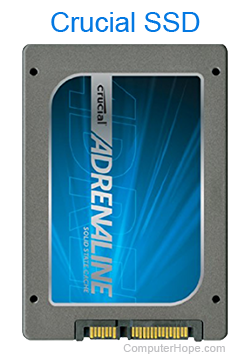Solid-state device
Updated: 01/24/2018 by Computer Hope

In computers, solid-state device is a storage media that does not involve magnetic disks or any moving parts. For example, computer RAM (random-access memory) uses solid-state media. RAM consists of microchips that store data on non-moving components, providing for fast retrieval of that data. Examples of solid-state devices are the flash drive and the solid-state drive or, SSD (solid-state drive).
What was the first solid-state device?
The transistor is considered to be the first widely used solid-state device and is still used in almost all electronic devices today.
